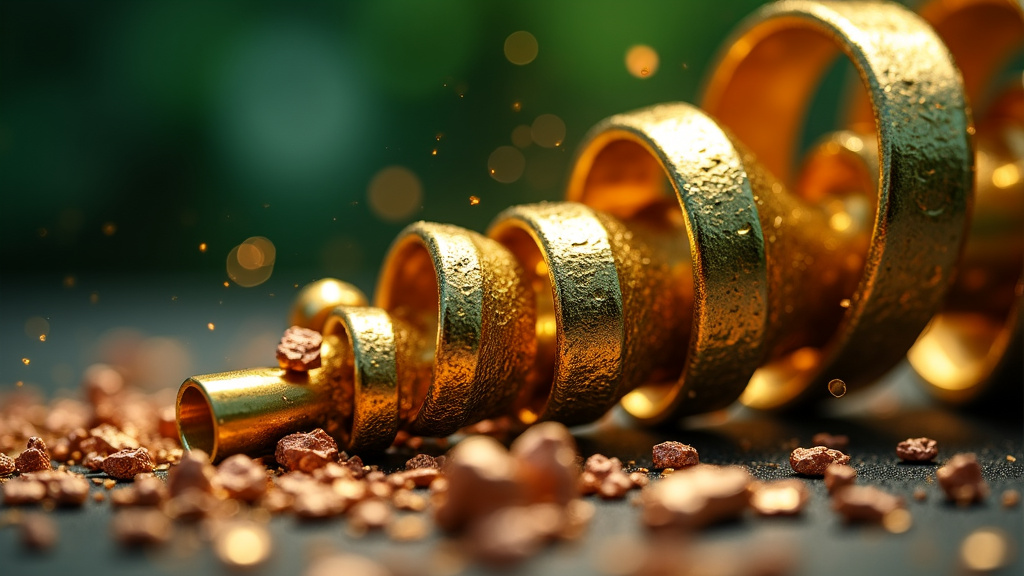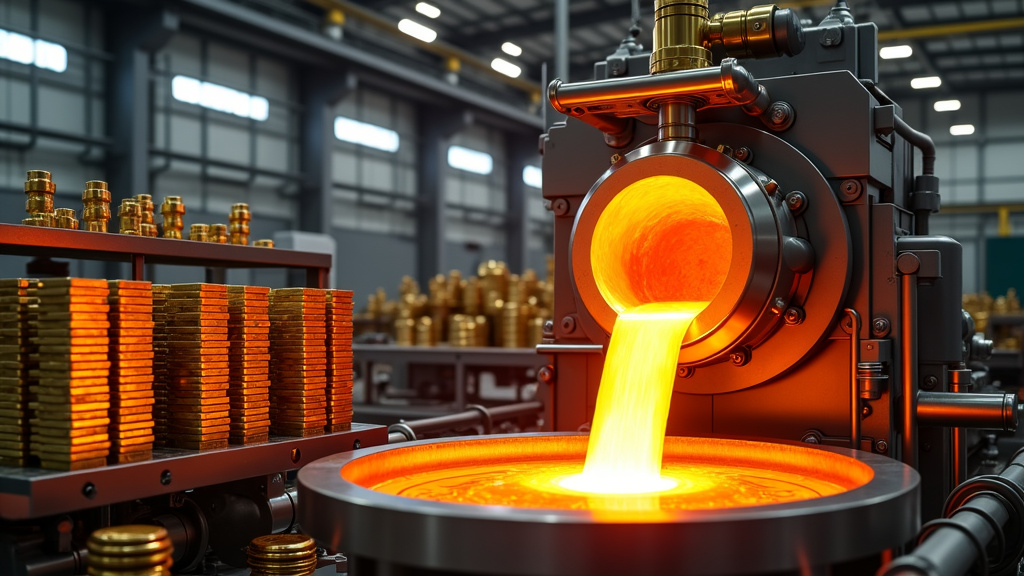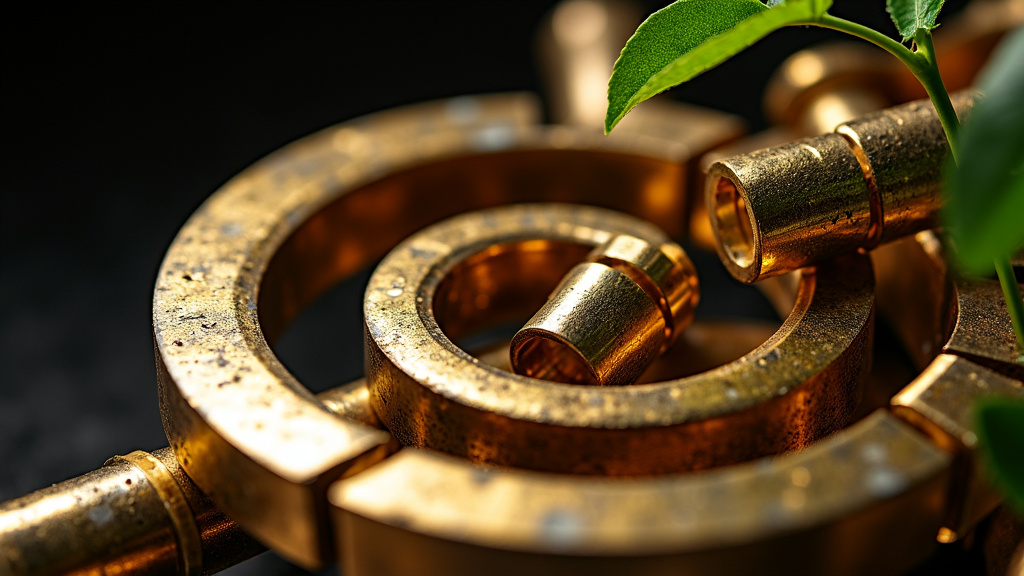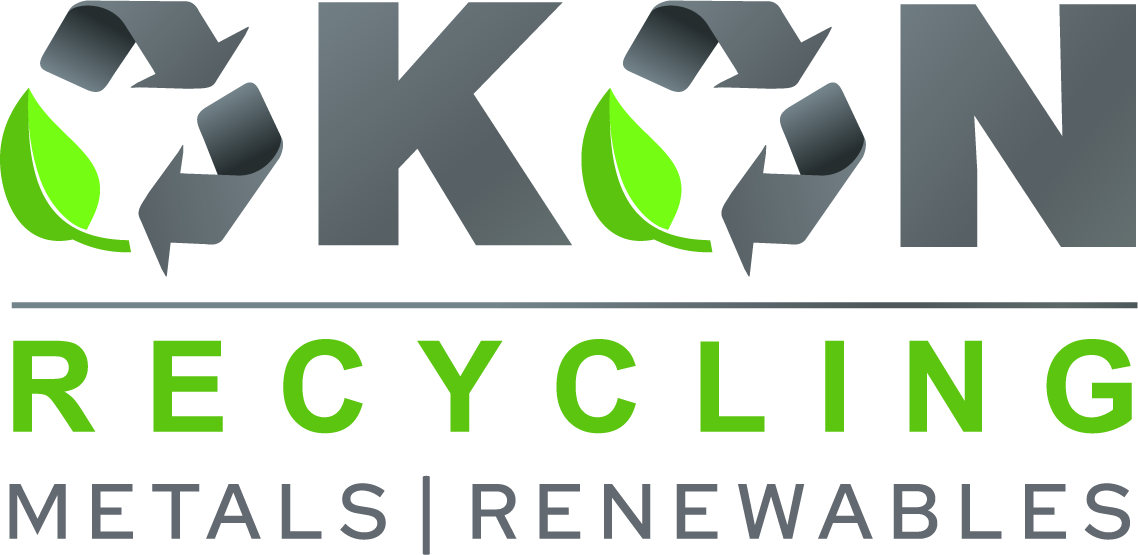5901 Botham Jean Blvd, Dallas, TX 75215
Brass Recycling: A Sustainable Approach to Metal Management
March 21, 2025Have you ever considered the hidden value in those old brass doorknobs, faucets, or musical instruments gathering dust in your home? These everyday items hold the key to a sustainable future through brass recycling. With growing environmental challenges, recycling materials like brass is more critical than ever.
Brass recycling is essential for sustainable metal management, offering numerous environmental and economic benefits. This process, involving the collection, sorting, and repurposing of brass items, plays a crucial role in reducing waste and conserving our planet’s finite resources. By embracing brass recycling, we not only clear out clutter but also contribute to a circular economy.
The journey of recycled brass showcases human ingenuity and our capacity for environmental stewardship. From the moment a tarnished brass item is tossed into a recycling bin to its rebirth as a new component, every step is designed to maximize efficiency and minimize waste. According to the Copper Development Association, recycling brass uses up to 90% less energy compared to primary production, significantly reducing carbon emissions.
The Environmental Impact of Brass Recycling

Brass recycling is a beacon of sustainability in our resource-hungry world. This process diverts metal from landfills and reshapes our approach to resource management. By giving brass a second life, we conserve materials and redefine our relationship with the earth’s finite resources.
The energy savings from brass recycling are remarkable. According to industry data, recycling brass requires up to 90% less energy than producing it from virgin materials. This substantial reduction in energy use translates to a significant decrease in our carbon footprint. For every ton of brass recycled, it’s akin to unplugging a small power plant.
The benefits extend beyond energy conservation. Brass recycling plays a crucial role in minimizing greenhouse gas emissions. The U.S. Energy Information Administration reports that recycling metals can reduce carbon emissions by up to 500 million metric tons annually. This reduction is equivalent to taking millions of cars off the road, offering a tangible way to combat climate change.
Preserving Natural Resources
Recycling brass is about preserving our planet’s precious resources. Every piece of recycled brass means less copper and zinc extracted from the earth. This conservation extends beyond the metals to entire ecosystems that would otherwise be disrupted by mining activities.
Recycling one ton of brass can save up to 8 tons of bauxite, 14,000 kWh of energy, and 7.6 cubic meters of landfill space. These figures highlight the far-reaching impact of brass recycling on resource preservation and waste reduction.
| Recycled Brass | Saves up to 90% energy compared to new production |
| Energy Conservation | 14,000 kWh per ton |
| Landfill Space | 7.6 cubic meters per ton |
| Bauxite Saved | 8 tons per ton of brass |
The ripple effects of brass recycling extend to water conservation as well. Traditional metal extraction and processing are notoriously water-intensive. By choosing recycled brass, we indirectly save millions of gallons of water, a resource becoming increasingly scarce in many parts of the world.
Economic and Social Benefits
The environmental advantages of brass recycling align with significant economic benefits. The recycling industry creates jobs, stimulates local economies, and provides a steady stream of affordable raw materials for manufacturers. This economic boost aligns with ecological responsibility.
Moreover, brass recycling contributes to a more circular economy. It challenges the traditional ‘take-make-dispose’ model, encouraging a system where resources are used, recovered, and regenerated. This shift reduces waste and fosters innovation in product design and manufacturing processes.
Looking to the future, the importance of brass recycling in environmental conservation cannot be overstated. It represents a practical, impactful way for industries and individuals to contribute to a more sustainable world. By choosing recycled brass, we’re not just making a product choice; we’re casting a vote for the kind of world we want to live in.
Common Sources of Recyclable Brass

Brass, an alloy of copper and zinc, is found in many everyday items and industrial applications. Identifying these sources is vital for effective recycling, conserving resources, and reducing environmental impact. Let’s explore some common and surprising sources of recyclable brass.
Household Plumbing Fixtures
Your home’s plumbing likely contains recyclable brass. Faucets, valves, and fittings often use brass for its durability and corrosion resistance. When renovating, consider recycling old fixtures.
Even a leaky outdoor spigot can be a valuable brass source. By recycling these items, you’re upgrading your home and supporting sustainability.
Brass’s antimicrobial properties make it ideal for frequently touched surfaces like doorknobs and handrails. Remember to recycle these items, closing the loop on brass production.
Musical Instruments
The world of music resonates with brass. Trumpets, trombones, French horns, and tubas are examples of brass instruments that can be recycled. Even smaller components like mouthpieces contribute to the recyclable pool.
Did you know some percussion instruments, like cymbals and certain bells, contain recyclable brass? When clearing out your music room, consider recycling these metals.
Recycling musical instruments conserves resources and supports the supply chain for future production, ensuring new musicians can create music.
Electrical Components
In electrical systems, brass is crucial due to its conductivity. Terminals, connectors, and some wiring often contain recyclable brass. As you upgrade your electrical system or discard electronics, look for these components.
Even light switch plates or outlet covers might be brass, especially in older or high-end homes. These items can enhance your recycling efforts.
Some vintage electrical devices, like old telephones or radios, may contain significant brass amounts. Before discarding these gadgets, consider their recycling potential.
Decorative Objects and Hardware
Brass’s warm hue makes it popular for decorative objects and hardware. Picture frames, candle holders, and figurines often contain recyclable brass. Even old trophies can be recycled.
In furniture and cabinetry, brass hardware like drawer pulls, knobs, and hinges are common. When replacing these items, add them to your recycling pile.
Old brass buttons from clothing are an unexpected source. While small, they add up, especially for sewing enthusiasts or vintage garment collectors.
Surprising Sources of Recyclable Brass
Let’s look at some unexpected items with recyclable brass:
- Zippers from old luggage or heavy-duty clothing
- Certain fishing gear, including reels and lures
- Old mechanical typewriters (a goldmine of brass components)
- Some vintage car parts, especially in classic models
- Brass-cased ammunition shells from shooting ranges
By identifying these diverse sources, we can promote effective recycling programs. Every contribution adds to significant environmental benefits. So, when decluttering or renovating, look for these valuable brass items—you might be surprised by what you find!
The Brass Recycling Process: Transforming Scrap into Valuable Resources

Brass recycling is essential for revitalizing discarded metal, conserving resources, and reducing environmental impact. This process transforms brass scrap into reusable material through a series of efficient and eco-friendly steps.
Collection: The First Step in Brass Recycling
The recycling journey starts with collection. Scrap yards and recycling centers gather brass from industrial byproducts, construction waste, and household items. Plumbers, HVAC technicians, and demolition crews often provide a steady supply of brass scrap.
Individuals can contribute by identifying brass items like old plumbing fixtures, musical instruments, or decorative pieces. Many facilities offer cash incentives, making brass recycling both environmentally and financially rewarding.
To streamline collection, some companies provide specialized containers or pickup services for large amounts of brass scrap. This step is crucial for diverting valuable brass from landfills into the recycling stream.
Sorting: Separating Brass from Other Materials
After collection, brass undergoes meticulous sorting to ensure the purity and quality of the recycled material. Skilled workers and advanced machinery separate brass from other metals and non-metallic materials.
Magnetic separators easily remove ferrous metals, as brass is non-magnetic. Distinguishing brass from other non-ferrous metals like copper or bronze requires sophisticated methods. Advanced techniques like eddy current separation or optical sorting help identify and segregate different brass alloys.
This sorting step ensures only high-quality brass enters the recycling stream, maintaining the integrity of the final product. It’s a delicate balance of efficiency and accuracy, crucial for subsequent stages.
Cleaning: Preparing Brass for Processing
Post-sorting, the brass scrap undergoes thorough cleaning to remove contaminants like dirt, oil, paint, or other non-metallic materials that could compromise quality. Cleaning methods vary depending on the type and condition of the scrap.
Common techniques include chemical baths, high-pressure water jets, and mechanical scrubbing. For example, brass from old machinery might need degreasing, while decorative items might require paint removal. This meticulous cleaning ensures only pure brass enters the melting phase.
Clean brass melts more efficiently, resulting in higher-quality recycled material and reducing impurities that could affect the final product’s properties.
Melting: Transforming Solid Brass into Liquid Metal
The melting phase marks the transformation of brass scrap into reusable material. Clean, sorted brass is heated in large furnaces to over 1,652°F (900°C), the melting point of most brass alloys. This process is more efficient than producing new brass from raw materials.
During melting, impurities rise to the surface as slag and are skimmed off. The composition of the molten brass can be adjusted by adding pure copper or zinc, allowing for the creation of specific alloys tailored to different applications.
Modern facilities often use electric arc or induction furnaces, which offer better energy efficiency and temperature control compared to traditional gas-fired furnaces. This melting stage is crucial for homogenizing the brass and preparing it for re-manufacturing.
Re-manufacturing: Giving Brass a New Life
The final stage is re-manufacturing, where molten brass is formed into new products or shapes. This step varies depending on the intended application of the recycled brass.
Common processes include casting brass into ingots or bars for easy transport and storage, or forming it into sheets, rods, or specific shapes for immediate use. Some advanced facilities can produce finished or semi-finished products directly from recycled brass.
Quality control measures throughout this stage ensure the recycled brass meets industry standards. The re-manufactured brass then enters the market, ready for use in plumbing fixtures, musical instruments, industrial components, and decorative items.
By understanding and participating in this comprehensive recycling process, individuals and businesses contribute to conserving resources, reducing waste, and supporting sustainable metal use. Brass recycling saves energy, reduces environmental impact, and ensures this valuable alloy continues serving diverse needs across industries.
| Melting Technology | Energy Efficiency (%) | Melting Capacity |
|---|---|---|
| Crucible Furnace | 7-19% | 15 lbs – 1.5 tons |
| Cupola Furnace | 40-50% | 100 lb/hr – 20 tons/hr |
| Electric Arc Furnace | 35-45% | 1.5 tons – 100 tons |
| Induction Furnace | 50-76% | 2 lbs – 50 tons |
| Reverberatory Furnace | 30-45% | 0.5 tons – 125 tons |
| Rotary Furnace | 35% | N/A |
| Stack Furnace | 40-45% | 1 ton/hr – 10 tons/hr |
How Okon Recycling Can Help with Brass Recycling

Experience is crucial in brass recycling. Okon Recycling, with over a century of expertise, is a leader in the metal recycling industry. This extensive knowledge provides exceptional brass recycling solutions that benefit both businesses and the environment.
Okon Recycling operates state-of-the-art facilities equipped with the latest technology. These systems efficiently process brass scrap, ensuring every ounce is handled with care. By maximizing the value from brass scrap, Okon Recycling helps clients optimize their recycling efforts.
Environmental stewardship is central to Okon Recycling. The company’s brass recycling processes aim to minimize environmental impact, aligning with global sustainability goals. By choosing Okon Recycling, businesses aid in conserving natural resources and reducing greenhouse gas emissions associated with brass production.
Tailored Recycling Programs for Businesses
Okon Recycling offers customized brass recycling programs to meet the unique needs of each business, from small local operations to large industrial facilities. This flexibility ensures that every client receives a service that fits their specific requirements and scale.
Okon Recycling’s expert team collaborates with clients to develop comprehensive recycling strategies. These programs address immediate needs and support long-term sustainability goals. Partnering with Okon Recycling allows businesses to advance their environmental objectives while optimizing resource management.
Compliance with environmental regulations is critical for many businesses. Okon Recycling’s understanding of industry standards and regulatory requirements helps clients navigate this complex landscape. The company’s recycling programs ensure full compliance, providing peace of mind and protecting businesses from potential legal and financial risks.
The economic benefits of Okon Recycling’s brass recycling services are significant. By efficiently processing and marketing recycled brass, the company helps clients recover value from materials that might otherwise be discarded. This contributes to a more circular economy and provides a potential revenue stream for businesses engaged in brass recycling.
Innovation is key to Okon Recycling’s approach to brass recycling. The company continuously invests in research and development to improve processes and expand capabilities. This commitment ensures clients have access to the most advanced and effective recycling solutions available.
Building a Sustainable Future Together
By choosing Okon Recycling for brass recycling, businesses join a larger movement towards sustainability. The company’s efforts contribute to conserving natural resources, reducing energy consumption, and minimizing landfill waste. These environmental benefits extend beyond the immediate recycling process, fostering a more sustainable future for generations.
Okon Recycling’s dedication to customer service sets it apart. The company’s experts are always available to provide guidance, answer questions, and offer support throughout the recycling process. This commitment to client satisfaction ensures a smooth and efficient experience, from consultation to processing.
As sustainable business practices become increasingly important, Okon Recycling stands ready to help companies meet their environmental responsibilities. With its long legacy, advanced facilities, and commitment to sustainability, Okon Recycling is an ideal partner for businesses seeking to make a positive impact through brass recycling. Together, we can create a more sustainable, resource-efficient future for all.
Embracing Sustainable Brass Recycling for a Greener Future

Brass recycling is a cornerstone of sustainable waste management and resource conservation. Its benefits extend beyond environmental stewardship, offering economic advantages for businesses and individuals alike.
Embracing brass recycling contributes to a circular economy, maximizing resource efficiency and minimizing waste. This approach conserves valuable metals like copper and zinc while significantly reducing energy consumption and greenhouse gas emissions from primary brass production.
The environmental performance improvements are substantial. Recycling brass can save up to 90% of the energy needed for new production, resulting in a smaller carbon footprint and reduced strain on natural resources. For businesses, this means enhanced sustainability credentials and potential cost savings in an increasingly eco-conscious marketplace.
Looking to the future, embracing brass recycling is not just an environmental imperative but a smart business decision. The growing demand for sustainable practices across industries makes brass recycling a strategic choice for forward-thinking companies.
Now is the time to act. Assess your brass waste streams and consider partnering with experienced recyclers like Okon Recycling. Their expertise can streamline your recycling process, maximize the value of your scrap brass, and contribute to a sustainable future. Don’t let valuable resources go to waste—contact Okon Recycling at 214-717-4083 today to explore how you can be part of the brass recycling revolution.
